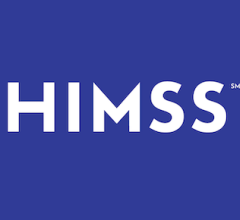
March 7, 2024 — Siemens Healthineers has launched an app designed for Apple Vision Pro that enables users such as surgeons, medical students, and patients to view immersive, interactive holograms of the human body captured through medical scans in their real-world environment. Visualizing the renderings through the app could assist in surgical planning and medical education, or help patients visualize procedures. The Cinematic Reality app is now available on the Apple App Store. Visitors to the Healthcare Information and Management Systems Society (HIMSS) conference, March 12-14 in Orlando, Fla., will have the chance to experience the app in person at the Siemens Healthineers booth.
“Cinematic Reality gives people the opportunity to immerse themselves in a world of photorealistic renderings of the human anatomy,” said Christian Zapf, head of Digital and Automation at Siemens Healthineers. “Apple Vision Pro perfectly presents that three-dimensional experience, combined with great flexibility and standalone use. We see great potential for the technology for clinical as well as educational purposes.”
Apple Vision Pro, the company’s first spatial computer, seamlessly blends digital content with the user’s physical world. Intuitive gestures allow users to interact with apps by simply looking at them, tapping their fingers to select, flicking their wrist to scroll, or using a virtual keyboard or dictation to type. Using the Cinematic Reality app on Apple Vision Pro allows users to zoom into details of clinical images, enlarging content and rotating around a rendering of the human body, and provides basic two-dimensional reading tools such as scrolling. Cinematic Reality app users can simply visualize clinical cases directly through the native app without connecting to an additional computer.
The Cinematic Reality app is designed to take advantage of the power of Apple Silicon and Metal, laying a strong foundation for future development. The app helps to provide a more realistic way of visualizing organs or body parts, making it possible to better explain clinical cases to patients, discuss clinical questions around referrals, or educate medical students. In the future, this could assist surgeons in preoperative planning, facilitate interdisciplinary communication between specialists in different fields, or help nonradiologists and patients to better understand scans and conditions.
“We have further optimized our existing algorithm of Cinematic Reality to allow computationally intense methods to run on Apple Vision Pro’s M2 processor,” said Sebastian Krueger, lead developer of Cinematic Reality at Siemens Healthineers. “The rendering technique is used to simulate the way light interacts with objects in a virtual environment, producing highly realistic lighting and reflections in the resulting images.”
For more information: www.siemens-healthineers.com


 November 15, 2024
November 15, 2024 








